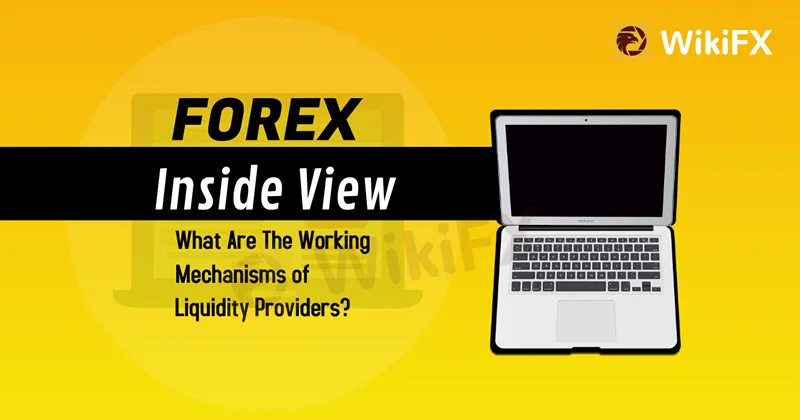简体中文
繁體中文
English
Pусский
日本語
ภาษาไทย
Tiếng Việt
Bahasa Indonesia
Español
हिन्दी
Filippiiniläinen
Français
Deutsch
Português
Türkçe
한국어
العربية
Forex Inside View: What Are The Working Mechanisms of Liquidity Providers?
Abstract:Money has absolute liquidity, and newer traders frequently rely on this statement, having no understanding of the difference between Forex and broker liquidity.

Money has absolute liquidity, and newer traders frequently rely on this statement, having no understanding of the difference between Forex and broker liquidity.
What does Forex liquidity mean?
While talking about Forex trading, users exchange one currency for another, and the execution time does matter. The market itself comprises millions of bid and ask deals; meanwhile, a brokerage company may not cooperate with liquidity providers – i.e. get no access to the market major players. What does liquidity provider mean?
Imagine the situation that a broker has 1000 registered traders and has applied to no liquidity providers. That means an order book may contain bid and ask offers of registered traders only. One user needs to buy 100 units of GBP/JPY at 154.01232, while the order book contains only 15 units at this price. As such, traders need to purchase assets higher than the market price, facing losses.
How does liquidity provider work in the same situation? A brokers order book is expanded by outer bid and ask deals, while a brokerage company serves as a mediator between two sides.
Cooperation models with liquidity providers
Brokers may deal with liquidity providers (LP) according to diverse cooperation models; meanwhile, all the models belong to the No Dealing Desk (NDD) category. The Dealing Desk (DD) principle makes brokers market-makers themselves, applying to no LPs.
The NDD type includes the following models:
ECN (Electronic Communication Network). A trader gets bid and ask offers delivered to the market automatically and executed by the market price. Meanwhile, price slippage may happen.
DMA (Direct Market Access). A trader forms an order, getting the possibility to serve as both price giver and price taker. Brokerage companies display transactions to liquidity providers directly.
STP (Straight-Through Processing). Bid and ask rates are provided by LPs. When a trader creates an order, brokerage companies transfer it automatically to liquidity providers.
This said beginner traders understand how liquidity works, and which brokerage companies to rely on. On the other hand, what about brokers? How can a brokerage company find a reliable and powerful enough liquidity provider?
Useful tips for brokers looking for liquidity providers
Liquidity providers are numerous, and it is a challenging task to select the best one. Take the following important tips into account:
Deal with “Tier-1” LPs only, as such companies connect brokers with the largest banks and financial institutions.
Choose large companies that provide services worldwide. Furthermore, it is better to deal with providers that offer many other effective solutions (for instance, White Label trading platforms).
Apply to LPs that provide clients with high-end customer support, being ready to meet your expectations.
- END -

Disclaimer:
The views in this article only represent the author's personal views, and do not constitute investment advice on this platform. This platform does not guarantee the accuracy, completeness and timeliness of the information in the article, and will not be liable for any loss caused by the use of or reliance on the information in the article.
Read more

Weekly Fundamental Gold Price Forecast: Hawkish Central Banks a Hurdle
WEEKLY FUNDAMENTAL GOLD PRICE FORECAST: NEUTRAL

Gold Prices at Risk, Eyeing the Fed’s Key Inflation Gauge. Will XAU/USD Clear Support?
GOLD, XAU/USD, TREASURY YIELDS, CORE PCE, TECHNICAL ANALYSIS - TALKING POINTS:

British Pound (GBP) Price Outlook: EUR/GBP Downside Risk as ECB Meets
EUR/GBP PRICE, NEWS AND ANALYSIS:

Dollar Up, Yen Down as Investors Focus on Central Bank Policy Decisions
The dollar was up on Thursday morning in Asia, with the yen and euro on a downward trend ahead of central bank policy decisions in Japan and Europe.
WikiFX Broker
Latest News
Saxo & Portuguese Bank Partnership
SEC Fines Broker-Dealers $275K for Incomplete SAR Filings
Elon Musk Warns of Imminent US Bankruptcy | Bitcoin Retreats from $100K
WikiEXPO Global Expert Interview: Advanced Practices and Insights in Financial Regulation
Justin Sun Invests $30M in Trump-Backed World Liberty Financial
Kraken Closes NFT Marketplace Amid New Product Focus
Robinhood Launches Ethereum Staking with 100% Rewards Match
Lured by False Promises: Malaysian Driver Lost RM218K to an Investment Scam
FTX Sets March 2025 Timeline for Creditor Payouts: What It Means for Investors
What is an Economic Calendar? How it works
Currency Calculator



